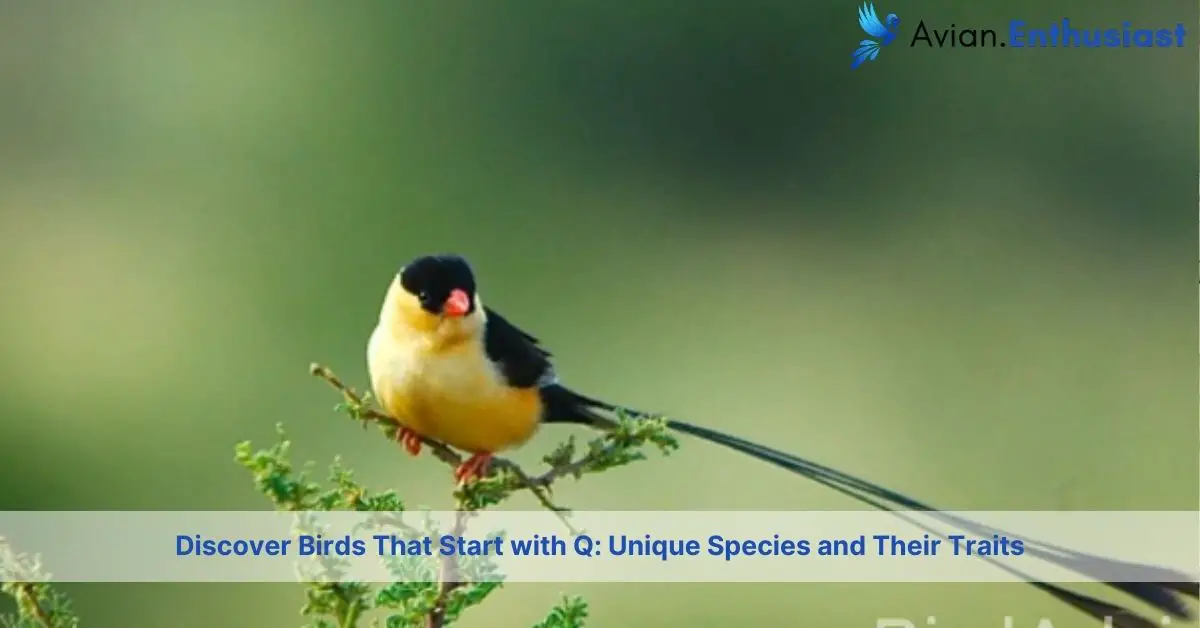Imagine you’re flipping through an ornithology guide or scrolling through a birdwatching app and you stumble upon the quirky section of birds that start with ‘Q’. It’s not the most populated section, but it’s fascinating nonetheless. These feathered friends are not only unique due to their initial letter but also because of their distinct characteristics and habitats.
You might wonder why it’s worth knowing about these particular birds. Well, each bird tells a story, contributes to biodiversity, and adds a special touch to the ecosystems they inhabit. Whether you’re a seasoned birder or just someone curious about nature’s nuances, exploring these ‘Q’ starting avians offers a glimpse into the world’s wonderful diversity. So let’s dive into the intriguing realm of these rare birds and discover what makes them so special.
Quail Overview
Expanding your birdwatching checklist? Quail might just capture your interest with their unique behaviors and diverse species.
Types of Quail
Quail come in various shapes and sizes, each with distinctive features. Some of the most recognized types include the California Quail, known for its plump body and distinctive black face mask, and the Bobwhite Quail, famous for its robust body and striking, white-striped face. Other exotic types include the Blue Quail, notable for its blue-gray plumage, and the Mountain Quail, which boasts a longer tail and is often seen strutting around at higher elevations.
Quail Habitats
Quail typically thrive in a range of environments, adapting impressively to different ecosystem conditions. For instance, the California Quail prefers brushy areas and wooded foothills, while the Bobwhite Quail is often found in mixed agricultural fields. On the other hand, the Blue Quail favors arid desert landscapes, and the Mountain Quail resides in dense, mountainous woodlands. Each species’ habitat choice reflects their unique survival strategies and feeding behaviors.
Quetzal Highlights
Continuing our exploration of ‘Q’ birds, let’s dive into the vibrant world of the Quetzal. Known for its striking appearance and cultural importance, the Quetzal is a captivating bird worth learning more about.
Quetzal Habitat
Quetzals thrive in misty, mountainous forests, primarily found in the tropics of Central America. They prefer altitudes between 4,000 and 10,000 feet, where cool temperatures and high humidity support a lush ecosystem. These birds are rarely seen in cleared areas; they rely heavily on dense tree cover, typically favoring habitats with abundant fruit-bearing trees like wild avocados, which are essential to their diet. If you’re planning a bird-watching trip, regions such as Monteverde Cloud Forest in Costa Rica offer perfect conditions to spot these elusive creatures.
Cultural Significance of the Quetzal
The Quetzal holds a profound place in Central American culture, symbolizing freedom and wealth. Historically, the bird’s vibrant feathers were used in royal garments and ceremonial headdresses, strictly worn by ancient Maya and Aztec leaders. Its association with freedom stems from the belief that Quetzals cannot survive in captivity; they thrive only in the wild. Today, the Quetzal continues to be revered, prominently featured on the flag and national emblem of Guatemala, signifying the importance of nature and freedom to the country’s identity.
Quick Overview of Quelea
Moving from the vibrant Quetzal to another intriguing “Q” bird, let’s explore the Quelea, often lesser-known but equally fascinating.
Behavior of Quelea Birds
Quelea birds, specifically the Red-billed Quelea, are considered one of the most abundant wild bird species globally. They’re highly social creatures, forming massive flocks that can include millions of individuals during migration or when roosting. These flocks are so dense that they can even obscure the sun at times! In their day-to-day activities, Queleas exhibit a spectacular coordination, especially during their undulating flight patterns that help protect them from predators.
Quelea Birds’ Impact on Agriculture
Despite their fascinating social behavior, Queleas aren’t always welcome guests. Known as the ‘feathered locusts,’ their huge flocks can devastate crops, particularly grains, causing significant challenges for farmers. In sub-Saharan Africa, where these birds are most prevalent, their feeding frenzies account for substantial losses each year, sometimes consuming as much as 10% of the region’s grain production. Measures to manage their numbers include culling and habitat modification, though these methods bring their own set of ecological concerns.
Queensland Birds Starting With Q
Moving from the daunting flocks of Queleas, let’s fly over to sunny Queensland, Australia, where you will discover two fascinating birds beginning with the letter ‘Q.’
Queensland Honeyeater
Meet the Queensland Honeyeater, a vibrant member of the bird community in this region. Recognize them by their striking black and yellow plumage, which makes a sharp contrast against the lush backgrounds of their habitats. These birds thrive in the coastal areas of Queensland, where they feast on the nectar of native flowers. The Queensland Honeyeater’s diet isn’t just limited to nectar though—these birds also enjoy small insects which provide them with the protein they need.
Queensland Rail Babbler
Venture deeper into Queensland’s dense forests, and you might hear the distinctive call of the Queensland Rail Babbler. This elusive bird is more often heard than seen. It sports a dusky brown appearance that helps it blend seamlessly into the dimly lit underbrush. Rail Babblers are ground dwellers; they rarely take to the skies, preferring to rummage through the leaf litter for insects and small vertebrates. Their shy nature and cryptic coloration make them a challenging yet rewarding sight for avid birdwatchers.
Conclusion
Exploring the world of birds that start with ‘Q’ has likely expanded your appreciation for these unique avian species. Whether you’re fascinated by the vibrant Quetzal or the industrious Queensland Honeyeater, each bird brings a distinct flair to the biodiversity of our planet. Remember to look out for these remarkable creatures on your next nature hike or perhaps in your own backyard. They’re not just a delight to observe but also play crucial roles in their respective ecosystems. So keep your binoculars ready and your curiosity piqued as you dive deeper into the fascinating world of birds.
Related Posts:
